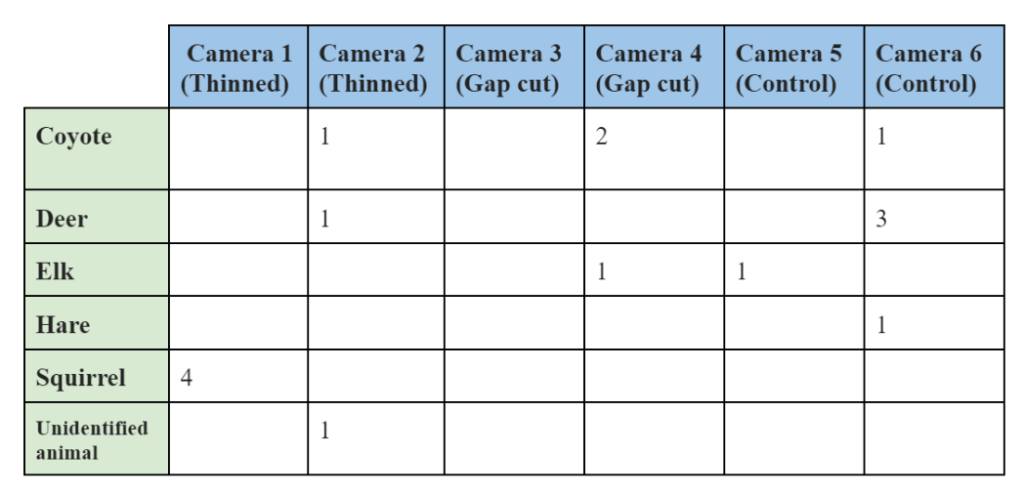Camera Traps for Climate Adaptation…and Critters!

Article by Margaux Clarke. Margaux completed her University of Washington Environmental Studies Capstone Project with Northwest Natural Resource Group in Winter/Spring 2023.
3… 2… 1… Say Cheese! NNRG’s use of scout cameras (camera traps) at their climate adaptation project in Nisqually Community Forest are an important part of the snow monitoring research, but they provide more insights into the forest activity than just the snow depth. For the purpose of this project, the cameras are used to collect daily snow accumulation data to supplement the data taken once every two weeks by NNRG techs. There are six cameras on site: two for every treatment NNRG has implemented at the forest. Cameras 1 & 2 are looking at a thinned area of forest. Cameras 3 & 4 are in a gap cut, and cameras 5 & 6 are in the control (unthinned) stand. These cameras take photos twice a day at set times (to ensure we have data from each day), and also take photos when set off by a motion sensor.
The photos taken with the motion sensor capture all sorts of interesting moments; from NNRG techs doing work on the site, to animal sightings, to weather events. These snapshots can tell us a few different things about the happenings of the forest. They also serve as a form of security to know if anyone tampered with the sites. In the case of weather, with regard to our interest in understanding snow depth across forest treatments, these motion activated photos give us a better idea of when the snowfall occurred and how wind may have affected the sites.
The animal sightings that get captured by the motion activated sensor are not only interesting photos to look at, but they also tell us a little bit about the effect the forest treatments have had on wildlife. In attempting to understand the best climate adaptation strategies, it is important that those strategies also work for the wildlife that call these forests their home. Wildlife sightings serve as evidence that forest thinnings and gap cuts don’t disrupt wildlife too much.
As seen in the graph below, the numbers of animals seen in each treatment area are not too different from one another, and there is a decent variety of wildlife captured in photos. Birds tend not to be caught on camera due to their speed and the camera perspectives.
Additionally, there was not a strong correlation between which animals found in the treatment areas versus the control areas (as seen below). The squirrel and hare were the only animals only found in only one treatment area which might be because smaller animals might not be caught on camera as often as larger, slower moving animals like elk or deer. However camera 1 also seemed to have what is thought to be the same squirrel that frequented a space within the camera view.
With so few sightings overall, it’s difficult to draw any conclusions about which species might prefer which treatment. We are hopeful another season of snow monitoring and photo collections will help fill in the picture.
For anyone looking to install scout cameras in their own forests, there will also always be a few challenges. Be sure to check if there are any flimsy branches or trees near the camera which could constantly set off the motion sensor. It may also be worth making a little overhang for the camera to sit under if heavy snow is anticipated to ensure that snow doesn’t cover the lens. As with almost all tech, there may be some unpredictable minor technical difficulties that could arise (our cameras on site have had arbitrary issues with certain SD cards). However there is generally a way to work around any issue that comes up, even if it takes a bit of thought and patience. That said, the scout cameras provide so much critical information for the climate adaptation research that it would not be possible to conduct this research without them. By bearing witness to wildlife and weather events, they provide a more complete picture of the happenings of the forest.













